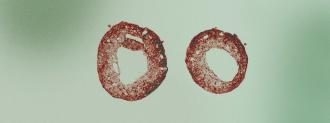Tiny sesame-seed-sized hearts are the first human mini heart developed in the lab. The mini hearts, called cardioids, have developed distinctly beating chambers, which fire in sync, just like the real deal.
This work could be a breakthrough when it comes to understanding and treating heart problems, from heart attacks to congenital abnormalities. The researchers also say the work is a first step towards building a complete, living model of the circulatory system in the lab.
The mini hearts are near perfect: Typically, heart organoids are created with mini external scaffoldings to guide their growth.
But the Austrian Academy of Sciences’ Institute of Molecular Biotechnology team grew these more realistic cardioids without the help of a scaffold. Instead, they exposed stem cells to a cocktail of chemicals that aid in heart growth.
According to the study, published in the journal Cell, It only took a week for the “self-organizing cells” to transform from stem cell packets to a millimeter-wide organoid with two chambers.
“You see the cells changing shape (while they grow) and it’s really incredible, but it’s on another level when they actually do something,” Nora Papai, a biologist and co-author of the study, told The Smithsonian. “They start twitching at day five or so, and at day seven you see this nice pace of beating.”
The challenge: Mini organs have been grown in the lab for decades, and last year, researchers at Michigan State University showed some early success with creating a mini heart.
What we’re interested in is essentially how human heart development works, and how it fails when we have, for example, congenital heart defects. We don’t have any access to this window — this is essentially a black box.
Sasha Mendjan
But heart organoids have been more challenging to develop than others, like lab-grown mini-brains, tear glands, and livers.
The first mini heart in the Austrian study was made up of mouse cardiac cells, which could contract rhythmically in a dish. But the lump of cells didn’t have the features of a real heart, reports Science. These new hearts have beating chambers and resemble the heart of a month-old embryo.
Senior author Sasha Mendjan told Freethink that this work “is important for us because a heart chamber is the basic unit of the heart and we managed to grow it now in the lab. It is also important that the growth happens naturally via developmental mechanisms and not by engineering/forcing the cells to do something.”
What to do with a mini heart? Congenital heart defects typically begin to appear in early pregnancy — a time that is difficult or impossible for scientists to investigate.
“What we’re interested in is essentially how human heart development works, and how it fails when we have, for example, congenital heart defects,” Mendjan told Live Science. “We don’t have any access to this window — this is essentially a black box.”
He believes the mini heart’s natural growth has important implications for studying heart behavior, too: “This ensures also a physiological response we see when we try to mimic the first stages of a heart attack.”
Organoids have many research applications — like helping fight coronavirus.
These recent findings could pave the way for alternative therapies for diseases such as congenital heart disease and an ethical forum for researching medications and treatments on the heart.
In the future, Mendjan says that they will work “towards multiple chambers, so more complexity of the model as well as connecting to a circulation system.”
We’d love to hear from you! If you have a comment about this article or if you have a tip for a future Freethink story, please email us at [email protected].






